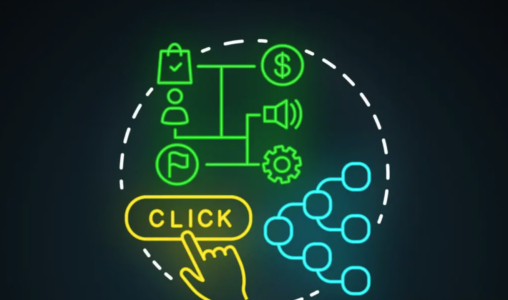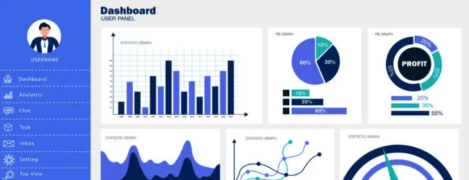Types of Attribution Models: Choosing the Right One

Marketing attribution is like solving a puzzle—every piece (or touchpoint) contributes to the bigger picture. But how do you decide which pieces are most important? This is where attribution models come in.
Attribution models are frameworks that determine how credit for conversions is assigned across the various touchpoints in a customer’s journey. Choosing the right model is essential for understanding what drives results and optimizing your marketing strategy.
In this article, we’ll explore the different types of attribution models, their pros and cons, and how to choose the one that aligns best with herdr.io’s SaaS marketing efforts.
Why Attribution Models Matter
Imagine a potential herdr.io customer interacts with multiple marketing channels before signing up for a free trial:
- They see a LinkedIn Ad.
- They read a blog on your website.
- They click a Facebook Ad and sign up.
Which channel gets the credit? Without a clear attribution model, you might overestimate or underestimate the value of certain touchpoints, leading to inefficient budget allocation. The right attribution model ensures you’re optimizing what works and cutting what doesn’t.
Single-Touch Attribution Models
Single-touch models assign 100% of the credit to one touchpoint in the journey.
1. First-Touch Attribution
- How it works: All credit goes to the first interaction.
- Example for herdr.io: The LinkedIn Ad gets all the credit for the trial signup.
- Pros:
- Simple and easy to implement.
- Highlights top-of-funnel efforts.
- Cons:
- Ignores middle and bottom-funnel contributions.
2. Last-Touch Attribution
- How it works: All credit goes to the last interaction before conversion.
- Example for herdr.io: The Facebook Ad gets all the credit.
- Pros:
- Useful for tracking direct conversions.
- Simple to understand.
- Cons:
- Neglects earlier touchpoints that nurtured the lead.
Multi-Touch Attribution Models
Multi-touch models distribute credit across multiple touchpoints, providing a more comprehensive view of the buyer journey.
1. Linear Attribution
- How it works: Credit is evenly distributed across all touchpoints.
- Example: LinkedIn, the website blog, and Facebook each get 33.3% of the credit.
- Pros:
- Fairly represents all interactions.
- Simple and balanced.
- Cons:
- Treats all touchpoints as equally valuable, which may not reflect reality.
2. Time-Decay Attribution
- How it works: Touchpoints closer to the conversion get more credit.
- Example: The Facebook Ad gets the most credit, followed by the blog, and then the LinkedIn Ad.
- Pros:
- Reflects the importance of touchpoints that seal the deal.
- Cons:
- May undervalue top-of-funnel activities.
3. Position-Based Attribution
- How it works: Credit is split between the first and last interactions, with some credit going to touchpoints in the middle.
- Example: 40% of credit goes to the LinkedIn Ad, 20% to the blog, and 40% to the Facebook Ad.
- Pros:
- Balances top-of-funnel and bottom-funnel efforts.
- Cons:
- Can feel arbitrary without customization.
4. Custom Attribution
- How it works: Credit is assigned based on a custom formula tailored to your business.
- Example: You decide LinkedIn Ads are typically more influential, so you assign them 50% of the credit, with the rest split among other channels.
- Pros:
- Completely tailored to your goals and insights.
- Cons:
- Requires significant data and expertise.
Algorithmic (Data-Driven) Attribution
Algorithmic attribution uses machine learning to analyze customer journeys and assign credit based on patterns.
- How it works: A tool like Google Analytics 4 evaluates historical data to determine how each touchpoint contributes to conversions.
- Example: The algorithm might find that customers who interact with both a LinkedIn Ad and a blog post are 2x more likely to convert, assigning higher credit to those touchpoints.
- Pros:
- Highly accurate and data-driven.
- Adapts to changes in customer behavior.
- Cons:
- Requires robust data and advanced tools.
- Can be difficult to interpret without technical expertise.
How to Choose the Right Model for herdr.io
The best attribution model depends on your goals, channels, and data maturity. Here’s a framework to guide your decision:
1. Define Your Goals
- Are you focusing on brand awareness, lead nurturing, or direct conversions?
- For awareness, consider first-touch attribution.
- For conversions, use last-touch or time-decay attribution.
2. Assess Your Customer Journey
- How complex is the journey? If customers interact with multiple touchpoints, a multi-touch or algorithmic model may provide better insights.
3. Evaluate Your Data
- Do you have the tools to track and analyze all touchpoints?
- For limited data, first-touch or last-touch attribution is easier to implement.
- For robust data, explore algorithmic attribution.
4. Align with Your Channels
- Certain channels may favor specific models. For example:
- LinkedIn Ads (awareness-focused): First-touch or position-based models.
- Google Search Ads (conversion-focused): Last-touch or time-decay models.
Next Steps: Setting Up Your Attribution Framework
Now that you understand the types of attribution models, it’s time to apply this knowledge to herdr.io’s marketing efforts. In our next article, we’ll guide you through setting up an attribution framework, including defining KPIs, tracking tools, and data integration.
Read Next: Setting Up Your Attribution Framework →
Final Thoughts
Attribution models are not one-size-fits-all. They are tools to help you uncover the story behind your marketing performance. Choosing the right model for herdr.io will empower you to make smarter decisions, optimize your channels, and grow more effectively.
By mastering attribution, you’re not just tracking conversions—you’re building a roadmap for scalable success. Stay tuned as we dive deeper into the practical steps to implement your attribution strategy!







